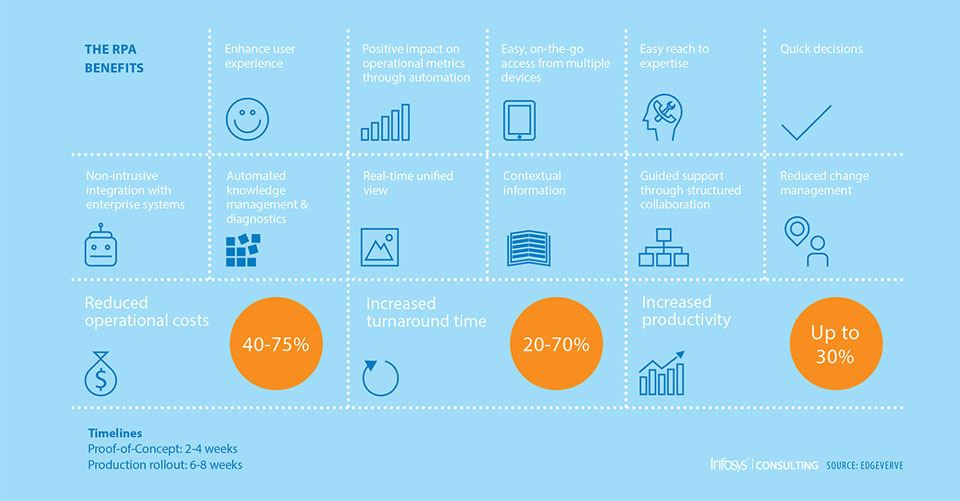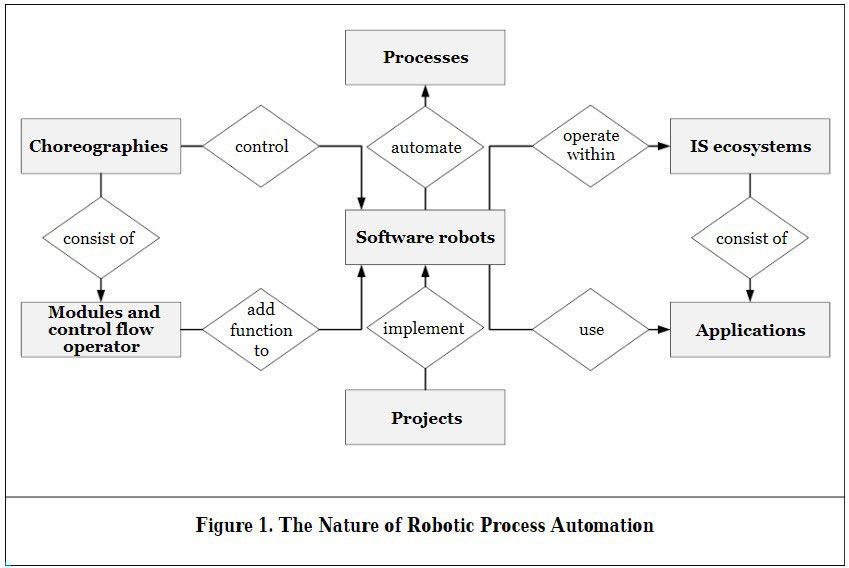Robotic Process Automation (RPA) The age of automation with AI and robotics Recent advances in digitalization have had a significant impact on the work performed by employees, as well as on products and their associated technologies. It is predicted that in the near future a significant amount of the work that is routinely done will be automated or robotic. RPA is absolutely essential for the available workforce to focus on more value-added tasks than routine work and for the company to generate more value.
RPA is a technology that is still evolving. In fact, in this form of automation, which has made its way to the present day by adopting approaches called artificial intelligence (AI), workflow automation and screen scraping, robots offer the opportunity to perform repetitive and precise tasks through machine learning. In this way, these robots, which can perform many predefined tasks in various environments, can connect with permitted applications and APIs and perform many time-consuming and time-consuming tasks such as supply chain management, data transfer, reporting, form tracking, etc..
In order for RPA, which has become a part of digital transformation, to create valuable results, processes must be well analyzed, designed and planned correctly.
To give an example of the workforce it has gained; 85 robots for 13 detailed and meticulously created tasks in the legal request process of a bank were able to process 1.5 million requests in a year, creating a workforce equal to the capacity of more than 200 employees.(*) This enabled bank employees to focus on different issues and work more efficiently.
This is how we see the advantages of robotic process automation;
- It allows you to achieve fast and consistent results.
- Reduces the margin of error and risk to zero.
- It offers the opportunity to use human resources more efficiently.
- It can work 24/7 and complete routine operations.
- Reduces operational burdens.

Sectors that are used more intensively today and whose usage rate is expected to increase;
- Industry and Production
- Banking and Finance
- Insurance
- E-Commerce
- Telecommunications and Technology
- Energy and Public
As in many other areas, I have shared resources that contain technical information such as the generally accepted standards and architecture that IEEE has set in RPA. RPA general diagram;

In 2020, it is significant for our domestic companies that 54% of Europe-based companies are planning to use RPA (Robotic Process Automation) in the near future. After all, Europe will continue to be a major target market and competition center for us for a long time. Ultimately, we must maximize our efficiency at every point in our businesses to develop and/or maintain our competitive power.Anıl ATALAY
trex Project Sales Manager


